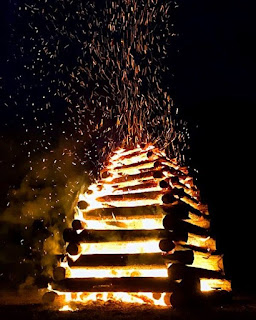The ruling planet of Libra is Venus. Libra is the only zodiac constellation in the sky represented by an inanimate object.
The Libra sign follows the Virgo sign.
We could almost say that Virgo (Lady) "holds" Libra (Scales) in her hands.
Libra is also another Zodiac sign which can help us understand the true nature of the Zodiac. Which is that the Zodiac is Solar and not Stellar system of signs.
I have already written several article explaining how zodiac sings mark periods of time when important natural events happen during Solar year. These events are linked to the climatic changes in temperate zones of Evroasia and occur every year at more or less the same time. And are not in any way affected by any other star except our own, our Sun.
So far I have shown that four zodiac signs, Aries (ram), Taurus (bull), Pisces (fishes) and Capricorn (goat) mark important cyclical natural events related to animals who live in temperate zones of Evroasia.
Aries - marks lambing season of European wild sheep
Taurus - marks calving season of European wild cattle
Pisces - marks mating season of European salmon
Capricorn - marks mating season of Alpine ibexes
These events occur every year at the same time, during the time period marked by the images of these animals. And these events are not in any way affected by any star. And they are not in any way influenced by the precession. Taurus - marks calving season of European wild cattle
Pisces - marks mating season of European salmon
Capricorn - marks mating season of Alpine ibexes
And what about the other non animal zodiac signs? I have so far covered these 3:
Sagittarius - marks the fur hunting season in Continental Eurasia
Well the part of the Solar year marked by the Libra zodiac sign start the day after the Autumn Equinox. Autumn Equinox marks the moment when day and night are of the equal length.
The day after the Autumn Equinox, night becomes longer than day. This is the moment when the feminine principles (dark, cold, wet), the Yin principles of Mother Earth, finally overpower the masculine principles (bright, hot, dry), the Yang principles of Father Sun.
I talked about this in my post "Yin and Yang".
From that day the scales tip and Mother Earth, The Lady, The Virgo, becomes dominant force in the Sun - Earth system.
This event, the tipping of the equilibrium of day and night in favour of night, occurs every Solar year at the same time (22nd of September). And this event is not affected by stars and is not influenced by precession. It is firmly fixed on the Solar circle.
And this is why we find the Zodiac sign Libra where it is. To mark this event.
So what do you think of all this?
BTW, Mesopotamians seems to have viewed Libra in the same way, as their name for this sign suggest: ZIB-BA AN-NA, The Balance of Heaven. I talked about this in my post "ZIB-BA AN-NA"...
PS: I have since finished the full analysis of the European Zodiac. You can find the jump page to the articles about all the signs here...



























